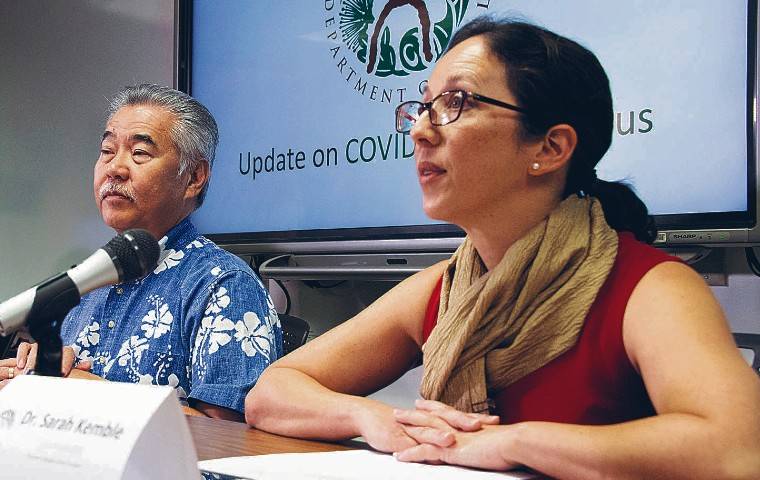VIDEO: Hawaii public schools may phase in ‘blended learning’ after fall break


STAR-ADVERTISER
Gov. David Ige and Dr. Sarah Kemble, acting state epidemiologist. The Department of Health today released long-awaited benchmarks, including COVID-19 case counts, that will help determine when schools should open or close.


The Department of Health today released long-awaited benchmarks, including COVID-19 case counts, that will help determine when schools should open or close.
A key threshold is the number of positive COVID-19 Opens in a new tab cases per 10,000 population over a 14-day period, by island, according to Dr. Sarah Kemble, acting state epidemiologist. Under those metrics, schools on Oahu could return to blended learning if they are adequately prepared.
From Sept. 1 to 14, Oahu had 1,937 cases in a population of 974,563, which translates to 19.9 cases per 10,000. The metrics suggest that when the case count is between 15.1 and 25, both elementary and secondary schools should consider using a blended learning model.
Kemble appeared with Gov. David Ige and Superintendent Christina Kishimoto at a briefing today to announce the release of the 28-page guidance Opens in a new tab and metrics Opens in a new tab which are posted at health.hawaii.gov.
Not until case counts are below 5 would in-person instruction be advised for both elementary and secondary schools, according to the metrics. Conversely, if case counts exceed 35, everyone should be learning from home.
“We know that when schools begin in-person learning there will inevitably be positive cases,” Kemble said. “All schools must be well prepared for this.”
Don't miss out on what's happening!
Stay in touch with breaking news, as it happens, conveniently in your email inbox. It's FREE!
Community transmission rates are just part of the decision making, she said. Schools must also assess their ability to mitigate and prevent spread. That includes enforcing physical distancing, providing masks and face shields for all student support personnel, establishing small cohorts of students that remain together, and cleaning and disinfection, among others.
Hawaii’s public schools are in their fifth week of instruction with the vast majority of the 179,000 students learning from home. Teachers and staff are coming to campus, along with about 3,000 students who have special needs, according to Kishimoto.
The guidance document establishes different thresholds for elementary and secondary students. Kishimoto said that younger students, who struggle most with distance learning, could be the earliest to return to in-person instruction.
The superintendent said that any return to campus would be “safe and strategic” and gradually phased according to local conditions and student needs.
“Our students remain at the center of every decision we are making throughout this pandemic,” Kishimoto said.
Watch the briefing above, or go to Gov. Ige’s Facebook page Opens in a new tab.





